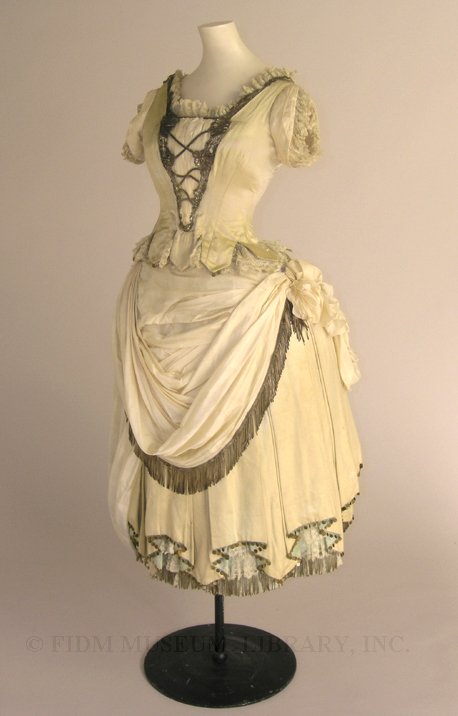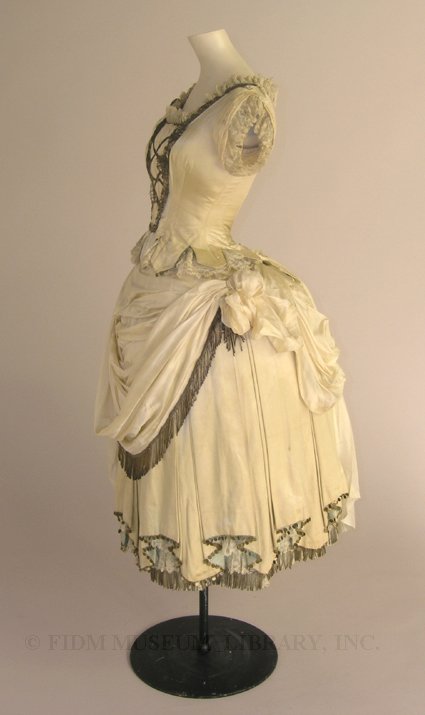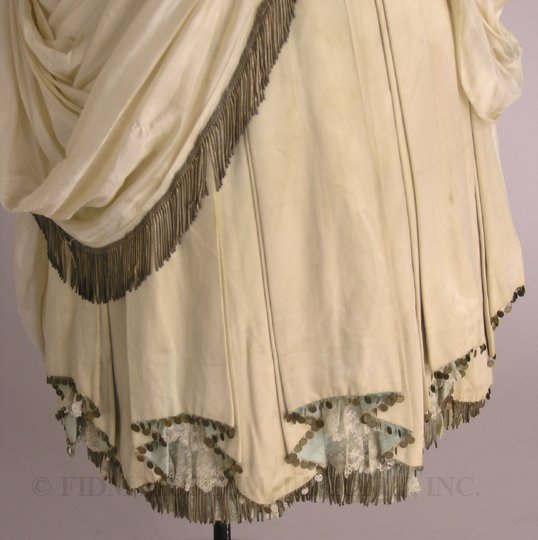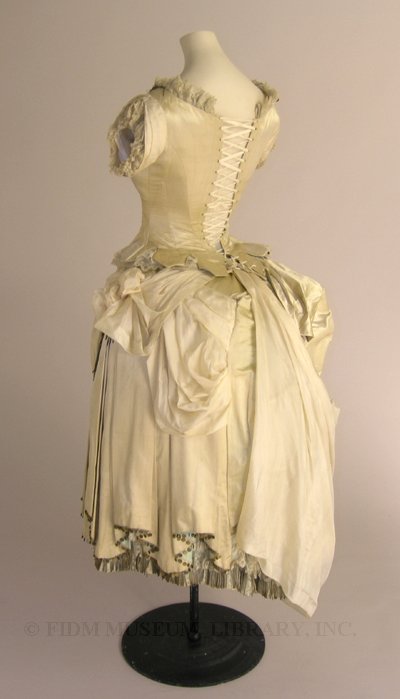Fancy dress
Contemporary Halloween celebrations offer an opportunity for young and old to dress in costume, but in the 19th and early 20th century, Halloween was primarily geared towards children. Adults who wanted to dress in costume attended or hosted fancy dress balls. Not connected to a specific holiday, fancy dress balls and parties took place throughout the year and could be small private events or large-scale public fundraisers. Some fancy dress balls were thematic and related to contemporary or historic events while others were more open, simply requiring attendees to come in costume. Unlike the macabre and/or sexy Halloween costumes of today, fancy dress costumes covered a much broader range of topics: historic figures, works of art, pieces of furniture, natural phenomena, animals and popular novels or plays. Suggested costumes were published in fashion periodicals and in descriptive manuals. The fancy dress featured below represents an undetermined character, though it might represent a gypsy or fortune-teller.

Fancy dress costume c. 1883-87 Swan & Edgar Gift of Helen Larson Estate 2001.31.15AB
Fancy dress was popular at nearly all economic levels and was available at multiple price points. Many revelers probably used published patterns to create fancy dress, while wealthier individuals purchased their fancy dress. Rental houses offered both fancy dress and formal dress short-term rentals at a reasonable price. For those who could afford it, even couturiers such as Worth and Poiret designed fancy dress costumes for their clients. Our gypsy dress bears a tag reading Swan & Edgar, a London department store.
As does Halloween today, fancy dress in the 19th century allowed individuals to dress and act outside the normal bounds of propriety. Aristocrats dressed as peasants and the poor dressed as royalty, while both groups probably displayed more skin than usual. Though the wearer of the FIDM Museum dress certainly covered her legs with stockings, this fancy dress still exposes much more leg than was commonly acceptable in the 1880s. While the opportunity to relax social norms was part of the appeal of fancy dress, it was also considered somewhat dangerous. For this reason, fancy dress costumes never included masks or face coverings. Masking or masquerades allowed participants too much license and were thought to result in lewd behavior. A December 24, 1869 New York Times article titled "The Masked Ball Orgies at the French Theatre" outlined the dangers of masking. At this masked ball, revelers were so out of control "they deliberately hurled one of the female dancers from the proscenium box to the floor beneath, a distance of several feet." The dancer suffered a "broken thigh."
Though fancy dress was not meant to be worn as fashionable dress, it often featured elements carried over from fashion. From this side view, you'll notice that this fancy dress costume features a prominent bustle. For the designer and wearer, it was probably impossible to separate the notion of fashion from the idea of costume. Thus, this fancy dress costume features elements of popular fashion, making it much easier to date!
In this detail shot, you can see the metal coil and coin trim. Both were once silver, but have now tarnished. The coins are inscribed with Arabic script.
If you're still wondering what to wear on Halloween, check out this 1887 fancy dress manual, Fancy Dress Described, or what to wear at fancy balls. This book went through multiple printings in the 1880s and 1890s and was extremely popular. The fantastic site Archive.org has scanned the entire book, complete with images. I recommend this costume!


